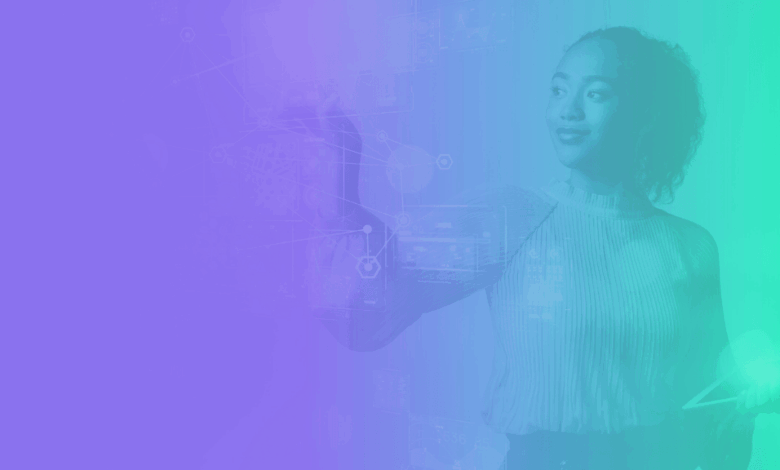
AI isn’t here to take our jobs, but it can make us happier in them
As with most, if not all industries, the marketing industry is undergoing a significant transformation driven by artificial intelligence (AI) and automation. As AI continues to develop, and we humans try to keep up with it, it is reshaping the ways of working across the global workforce.
We often hear the negative side of this when it comes to AI “taking jobs”, just very recently, a World Economic Forum report stated that nearly half (48%) of U.S employers plan to reduce their workforce because of AI. These types of headlines often oversimplify the story, and I’m keen to share the positive impact that AI can have on the workforce, not only making teams more productive, but bringing joy back to workers currently bogged down with repetitive, monotonous tasks.
Getting out of autopilot
AI – when used to its potential, can allow marketers to move from mundane tasks and focus more on the creative and strategic work, the type of work that brings reward and fulfilment. This shift not only improves productivity, but it enhances quality of life. This is what I call the ‘Evolved Workforce‘.
I believe the future workforce will be characterized by a blend of human creativity and AI-driven efficiency, a brilliant combination. Professionals will need to adapt to new roles that require more technical skills and creative thinking, a better fit for the many of us that didn’t enter the marketing workforce to perform repetitive admin tasks.
What if your competitive advantage isn’t the skills you have, it’s how imaginative you are? Ironically, AI may well be the very thing that helps us stay human, freeing us from robotic tasks to focus on work that can make our businesses stand apart from the competition.
Don’t fall behind
Organizations that fail to embrace AI and automation risk being left behind in an increasingly competitive market. The industry is moving at pace, and companies must adapt to stay relevant. It’s not a choice, it’s a necessity.
The risks of not investing in AI adoption are significant, it’s clear organizations are investing in AI but the investment in adoptions is lagging behind. Companies that resist change are going to find themselves struggling with inefficiencies, higher operational costs, and an inability to meet customer expectations. On the other hand, those that get on board will reap the benefits of streamlined processes, reduced costs, and being able to deliver superior customer experiences faster and better than their competitors.
Crucially, I have seen a lot of marketers dipping their toes in with AI and automation, and this is great, and it’s a starting point, but it’s not enough. True AI adoption is when it becomes part of your daily routine, not just another tool you’re using, a habit you might call it. This is where the magic happens.
How to get started?
Despite the clear benefits of AI, many teams face challenges in adopting AI successfully. According to Forbes, marketers are widely acknowledged to be among those greatly affected by AI, which has made many race blindly into haphazard adoption. The pressure to adopt and integrate AI into business processes can be overwhelming, with only 17% of marketers having fully worked AI into their processes, leaving an AI-adoption gap.
When it comes to adoption, my advice is not to treat AI as just another tool, it’s more than that; it’s a mindset shift. Using AI within your tech stack fundamentally rewires how work gets done, allowing you to shift from rigid workflows with predictable outcomes to higher-order creativity and strategic decision-making.
Our Algomarketing Evolved Worker™ Blueprint outlines a three-phase strategy to embed AI into the fabric of your team:
Phase 1: Establish your foundation
- Identify AI change agents: select 3–5 marketers who already think with AI. These “Influencers” lead the charge full-time for at least six months.
- Equip them for success: provide enterprise-approved tools, a “Day 1 Demo Deck” of use cases, and up to 5 plug-and-play prompt hacks.
- Set clear objectives and key results: focus on adoption (e.g., 80% weekly usage) and skill growth.
Phase 2: Scale the movement
- Mentor & multiply: influencers mentor 2–3 peers quarterly, creating a ripple effect of AI Evangelists.
- Build a hack library: centralise repeatable prompts, standard operation procedures, and mini-integrations.
- Foster community: launch internal channels, FAQs, and broadcasts to keep momentum.
- Create rituals: host monthly hackathons, “Show & Tell Fridays,” and “Prompt-Off” competitions to keep engagement high.
Phase 3: Sustain & accelerate
- Map the journey: define clear progression paths with badges, privileges, and tool access.
- Track & share impact: monitor adoption by team or region and report results to leadership.
- Celebrate wins: use leaderboards, spot bonuses, and innovation showcases to reward progress.
Regulations, ethical concerns and overall scepticism can cause delays, and sometimes even the prevention of AI adoption. From data security to hallucinations or biased outputs, there are many risks to navigate. My suggestion? Collaborate with experts and move forward at a pace that aligns with your organization’s readiness.
What next?
The future of work for marketing teams is exciting, moving quickly towards offering your teams happier, healthier and more fulfilling career opportunities. This impact goes way beyond work, and that is something truly exciting.
As we move forward, it is essential for organizations to stay curious about ways that AI can support their everyday work functions, allowing teams to thrive. It’s also essential to monitor what’s happening, monitor the benefits you’re seeing, and use this data to grow and expand.





